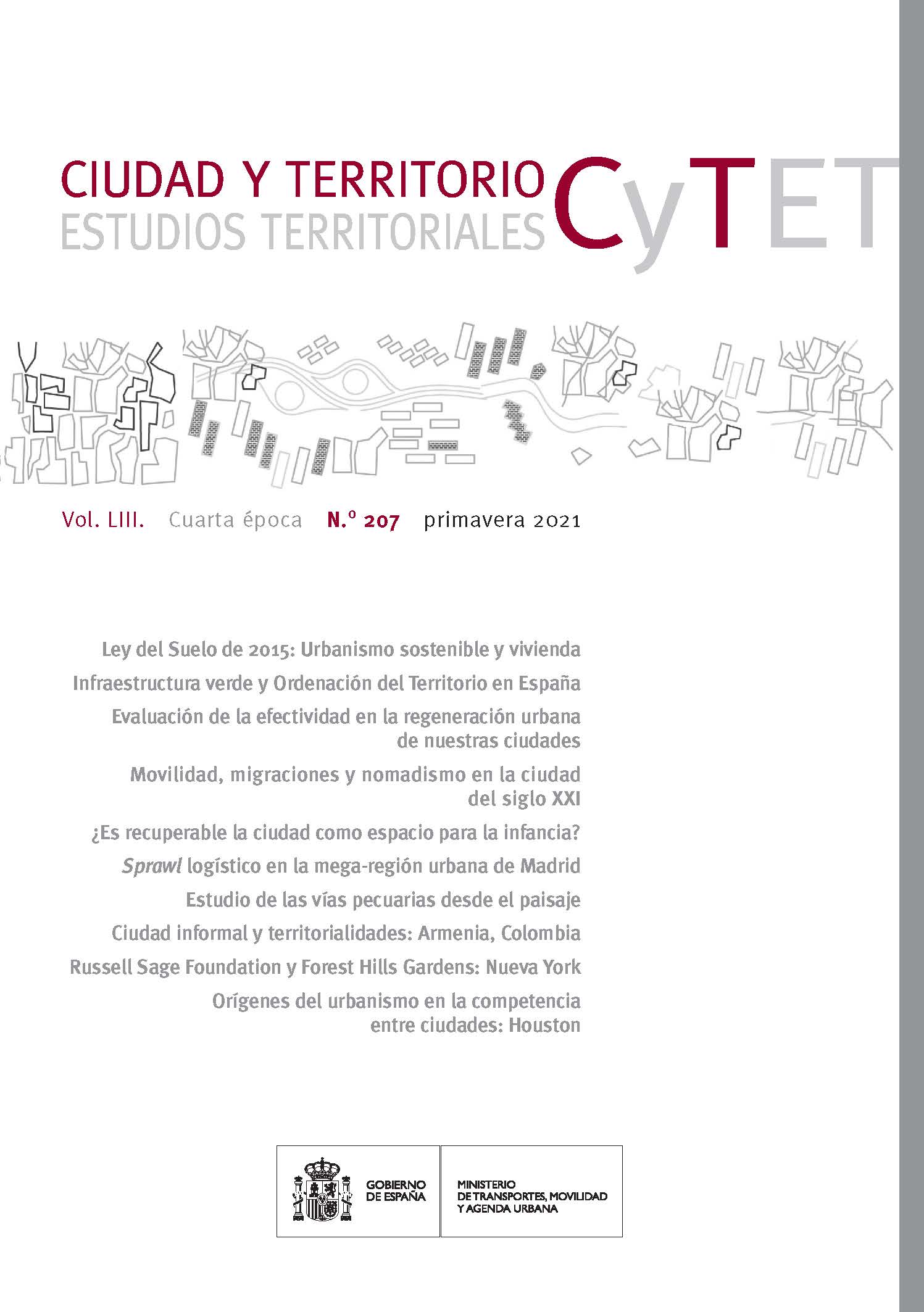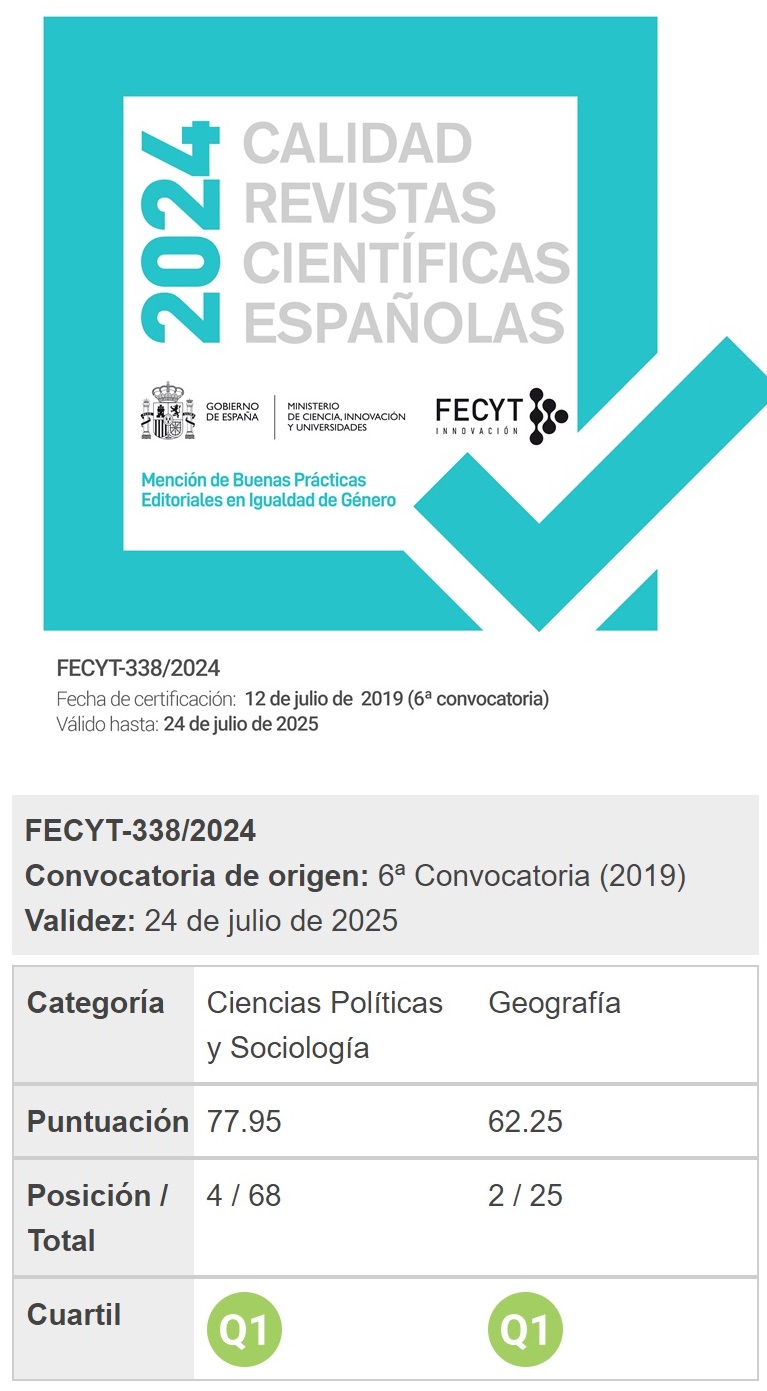Sprawl logístico en la mega-Región urbana de Madrid: el espacio de la distribución entre la dispersión y la centralidad
DOI:
https://doi.org/10.37230/CyTET.2021.207.06Palabras clave:
Planeamiento Urbano, Logística, Madrid, Nuevas regiones metropolitanas, SprawlResumen
Los nuevos modos de distribución y consumo en las grandes ciudades están implicando transformaciones significativas en el modelo de implantación de las actividades logísticas en las regiones urbanas. El presente artículo analiza la evolución de dicho modelo y las tendencias en la nueva ciudad de la distribución (freight village) en la Mega-región urbana de Madrid a través de un análisis secuencial 1998-2008-2018. El modelo resultante, que caracterizamos como “sprawl logístico”, es resultado de una serie de tendencias que sintetizan un escenario complejo y en permanente transformación. Mientras algunas de ellas se consolidan (el arco logístico A2-A4) otras (centros de gravedad vs distancia, tamaños medios y tipos de implantación) responden a ajustes tanto de la coyuntura económica como de las nuevas formas de distribución y hábitos de consumo, lo que permite aportar datos para un ejercicio de prospectiva y eventual planificación y toma de decisiones, tanto sectoriales como comprehensivas.
Descargas
Publicado
Cómo citar
Número
Sección
Licencia
Derechos de autor 2021 Darío RIVERA BLASCO, Javier RUIZ-SÁNCHEZ

Esta obra está bajo una licencia internacional Creative Commons Atribución-NoComercial-SinDerivadas 4.0.
Sin perjuicio de lo dispuesto en la legislación vigente sobre Propiedad Intelectual, y conforme a la misma, el/la los/las autor/a/es/as que publiquen en CyTET cede/n a título gratuito, de modo no exclusivo y sin límite temporal al Ministerio de Transportes, Movilidad y Agenda Urbana los derechos para difundir, reproducir, comunicar y distribuir en cualquier formato actual o futuro, en papel o electrónico, la versión original o derivada de su obra bajo licencia de Creative Commons Reconocimiento-NoComercial-SinObraDerivada 4.0 Internacional (CC BY-NC-ND 4.0), así como para incluir o ceder a terceros la inclusión de su contenido en índices, repositorios y bases de datos nacionales e internacionales, con referencia y reconocimiento en todo caso de la autoría del mismo.
Además, al realizar el envío, el/la los/las autor/a/es/as declara/n que se trata de un trabajo original en el que se reconocen las fuentes que han sido utilizadas en su estudio, comprometiéndose a respetar la evidencia científica y a no modificar los datos originales para verificar o refutar una hipótesis de partida; que el contenido esencial del mismo no ha sido publicado previamente ni se publicará en ninguna otra obra o revista mientras esté en proceso de evaluación en la revista CyTET; y que no se ha remitido simultáneamente a otra publicación.
Los autores deben firmar un Formulario de Cesión de Derechos, que les será enviado desde la Secretaría de CyTET una vez se acepte su artículo para ser publicado.
Con el objetivo de favorecer la difusión del conocimiento, CyTET se adhiere al movimiento de revistas de Open Access (OA) y entrega la totalidad de sus contenidos a diversos índices, repositorios y bases de datos nacionales e internacionales bajo este protocolo; por tanto, la remisión de un trabajo para ser publicado en la revista presupone la aceptación explícita por parte del autor/a de este método de distribución.
Se anima a las/os autoras/es a reproducir y alojar sus trabajos publicados en CyTET en repositorios institucionales, páginas web, etc. con la intención de contribuir a la mejora de la transferencia del conocimiento y de la citación de dichos trabajos.








 Enlace a CyTET en Linkedin
Enlace a CyTET en Linkedin